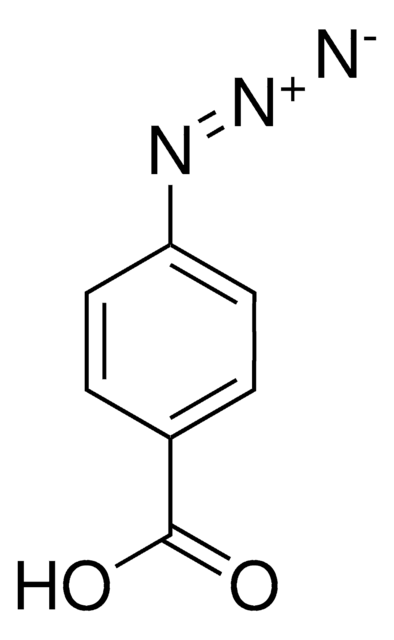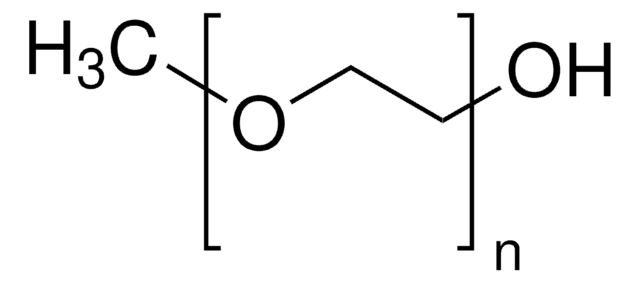17928
O-Methyl-O′-succinylpolyethylene glycol 2′000
Synonym(s):
Polyethylene glycol, O-(Succinyl)-O′-methylpolyethylene glycol 2′000, Polyethylene glycol 2′000 monomethyl ether succinate
About This Item
Recommended Products
form
powder
mol wt
Mr ~2100
mp
50-53 °C
Ω-end
carboxylic acid
α-end
methoxy
storage temp.
−20°C
Application
Biochem/physiol Actions
Storage Class Code
11 - Combustible Solids
WGK
WGK 3
Flash Point(F)
Not applicable
Flash Point(C)
Not applicable
Personal Protective Equipment
Choose from one of the most recent versions:
Certificates of Analysis (COA)
It looks like we've run into a problem, but you can still download Certificates of Analysis from our Documents section.
If you need assistance, please contact Customer Support.
Already Own This Product?
Find documentation for the products that you have recently purchased in the Document Library.
Customers Also Viewed
Articles
Professor Randal Lee (University of Houston, USA) discusses design considerations for iron oxide magnetic nanospheres and nanocubes used for biosensing, including synthetic procedures, size, and shape. The effects of these variables are discussed for various volumetric-based and surface-based detection schemes.
Our team of scientists has experience in all areas of research including Life Science, Material Science, Chemical Synthesis, Chromatography, Analytical and many others.
Contact Technical Service
![O-[(N-Succinimidyl)succinyl-aminoethyl]-O′-methylpolyethylene glycol 2′000](/deepweb/assets/sigmaaldrich/product/structures/426/156/518cf3f3-8b50-4c91-8501-929224a040d2/640/518cf3f3-8b50-4c91-8501-929224a040d2.png)


![O-[(N-Succinimidyl)succinyl-aminoethyl]-O′-methylpolyethylene glycol average Mn 750](/deepweb/assets/sigmaaldrich/product/structures/244/886/c80fd8d8-9a62-4a97-be17-32d83ffd1dfb/640/c80fd8d8-9a62-4a97-be17-32d83ffd1dfb.png)









